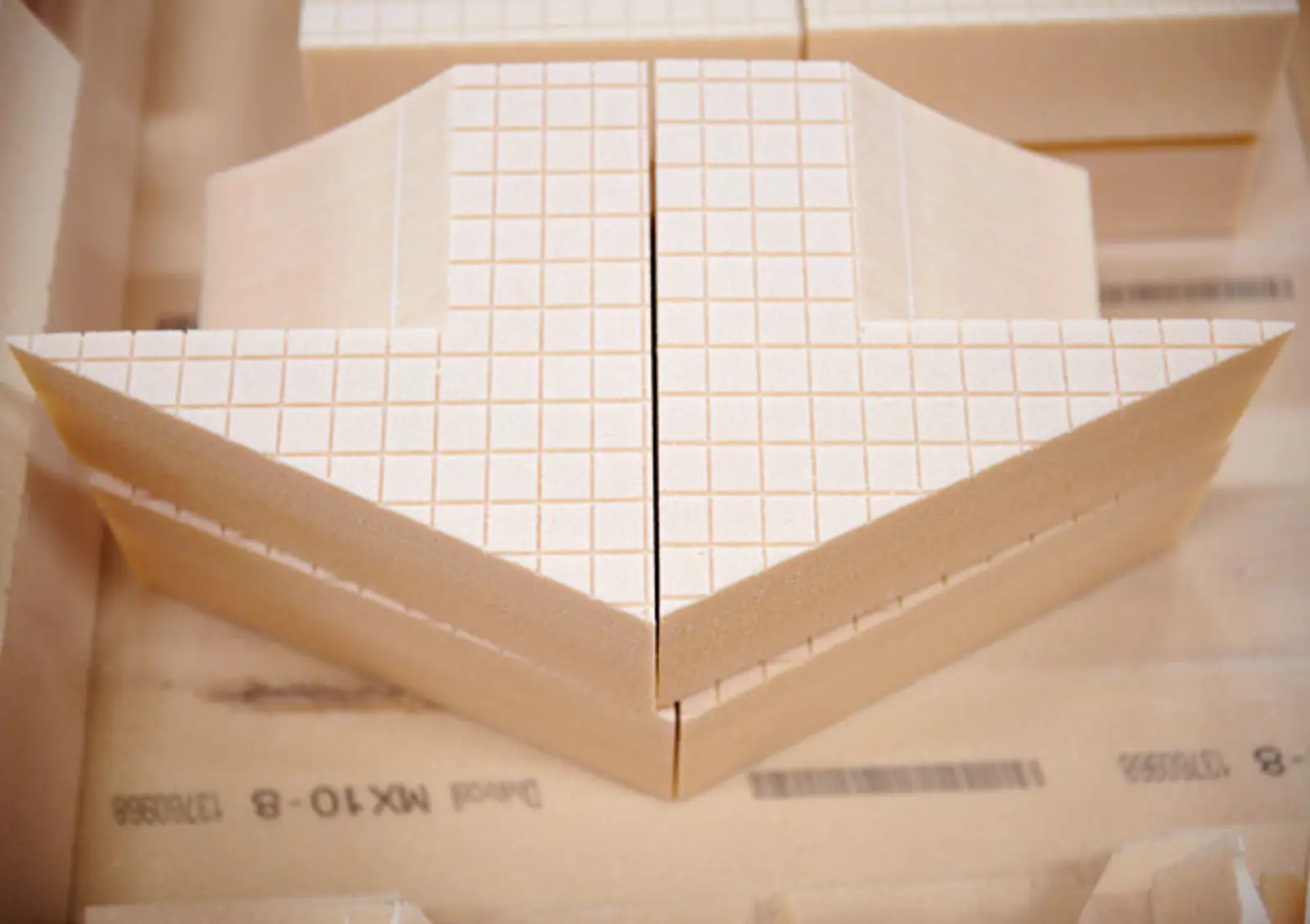
One crucial factor to consider when aiming to design an exceptionally light composite application is resin use. It might seem like a minor factor, but when optimising weight, every gram counts. Different aspects affect the use of resin – the core material itself and how it is machined.
Sometimes, you want to design an extremely strong and incredibly lightweight application—for instance, a race boat where every reducible gram is vital in perfecting its performance. Using a sandwich core is the obvious solution. But to optimise the strength-to-weight-ratio, you will also have to minimise the use of resin by combining the suitable core material with optimal surface finishing.

A core material that reduces resin use by 80%
One vital factor that will affect resin consumption is what type of sandwich core material you choose, and Diab’s range of Divinycell core materials has low resin uptake. But if you are looking to optimise your application and make it lighter than ever, we have exceptionally well-suited products.
Like Divinycell MC60, the innovative next-generation structural core with best-in-class mechanical properties to low weight. Its unique microcell structure renders substantial weight reduction of the laminate, thanks to lower core density combined with an exceptionally low level of resin uptake. The minimal cell size has reduced resin uptake by 80%.
Divinycell MC60 is a premium structural core suitable for weight-critical marine, industry, and aerospace applications. Other key features include excellent adhesion/peel strength, low water absorption and good thermal and acoustic insulation.
Smart finishing and innovative core-slitting technology
Finishing refers to the machining of structural core materials. You can choose from a wide range of cuts, grooves, and perforations in different patterns, each serving a specific purpose for form or flow. Depending on the geometry, manufacturing process or specific component requirements, the selected finishing will have an important part to play in a successful result and the reduction of resin used. The number of resin inlets can be reduced due to the excellent flow characteristics acquired in the proven design of grooves and perforations. Most Diab finishes for flow also bring financial savings since there is no need for an additional flow medium to achieve a good flow and wet-out of fibres.
How to select the optimal finishing
The complexity of the component and the curvature of the mould influence which core finishing fits best into the mould shape, with a minimum of spring-back and reduced resin consumption. Together with the geometry and expected performance of the product, it is crucial to analyse the finishing used for each manufacturing method. The manufacturing process defines what finishing for form and flow we will use. To distribute resin and evacuate the air, there are several options. Diab has developed unique solutions especially suited to the needs of fast and secure vacuum-assisted manufacturing so that you can get the best performance out of every design.
Cuts or shallow grooves on the core surface will allow the resin to distribute and ensure good laminate wet-out. Perforations allow air evacuation, and in a vacuum infusion process, the perforations will transfer resin from one side of the core to the other, further ensuring proper laminate wet-out. Perforations are also used when working with prepreg or when using core bedding adhesives. These finishes can be successfully combined with formable options.
Grooved and perforated combinations remove the need for an additional distribution medium within the laminate or above it. These finishes can be successfully combined with formable options such as grid-scored material. Selecting the proper finishing will impact not only the weight of the final component and surface quality but can also speed up manufacturing time.
Thin sheets and tight tolerances
Diab also offers an innovative core-slitting technology to cut the material into extremely thin sheets with tight tolerances. The benefits include a smooth surface finish, 3D formability and decreased resin uptake – up to 30% depending on the core type and grade.
Read more about our Finishing options here.
